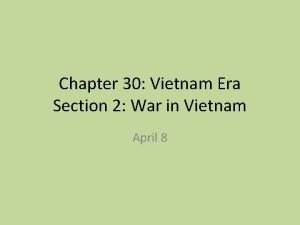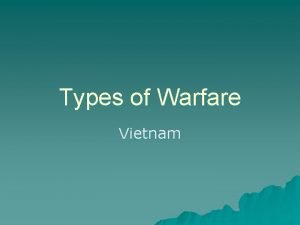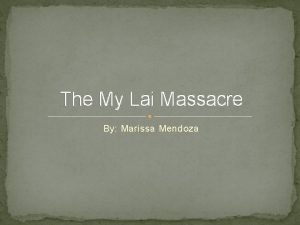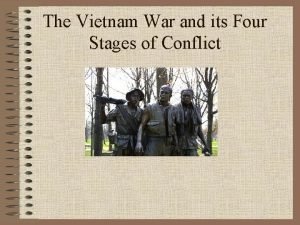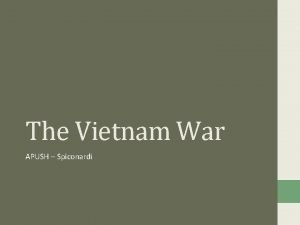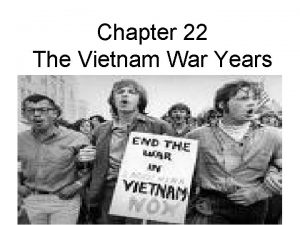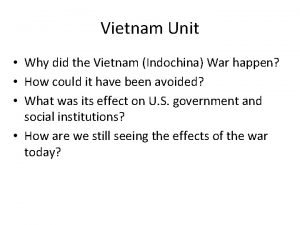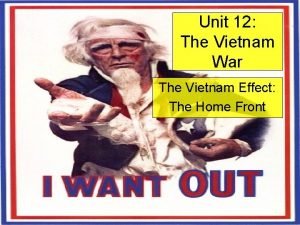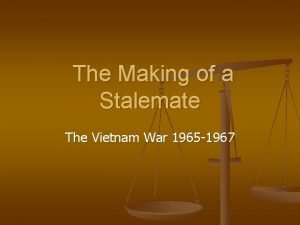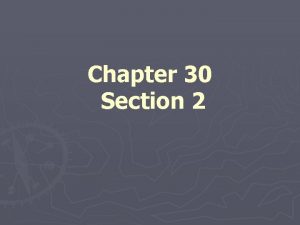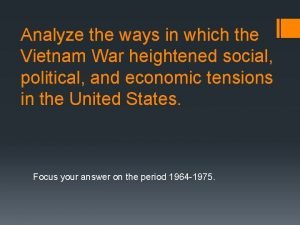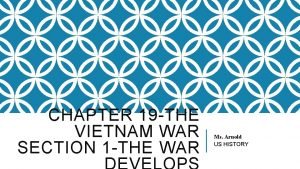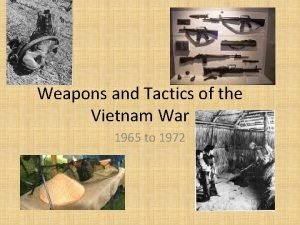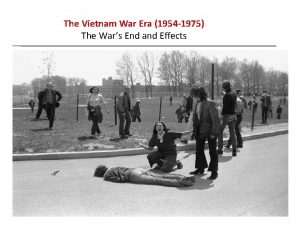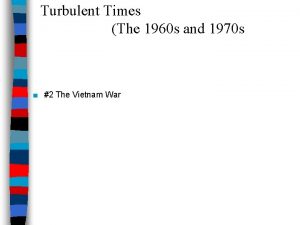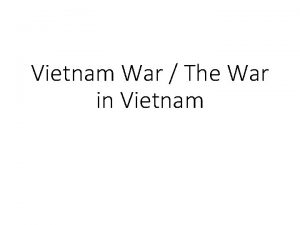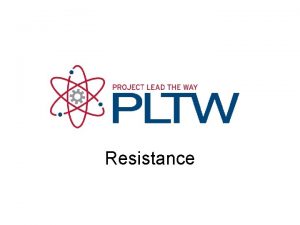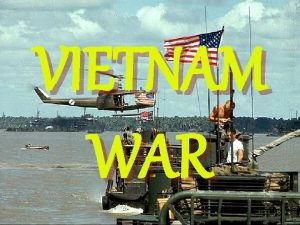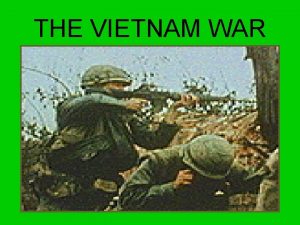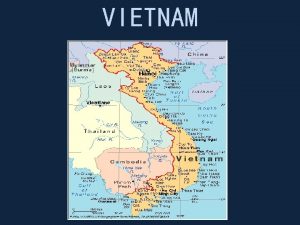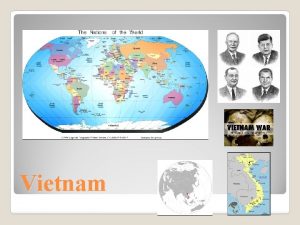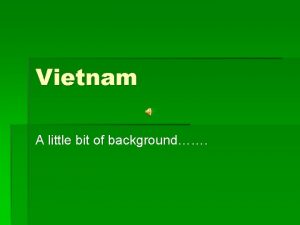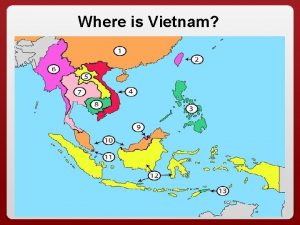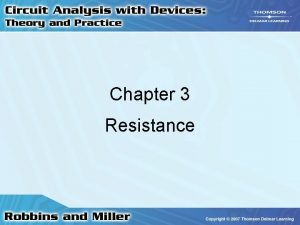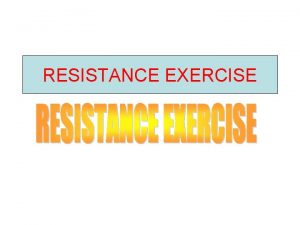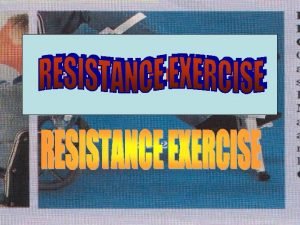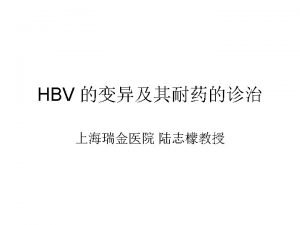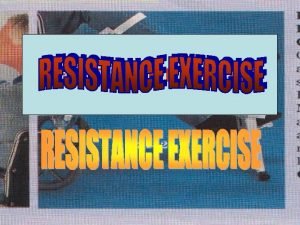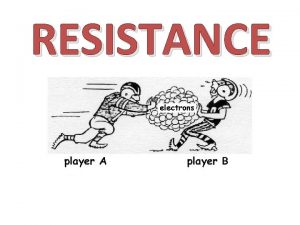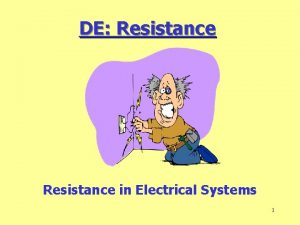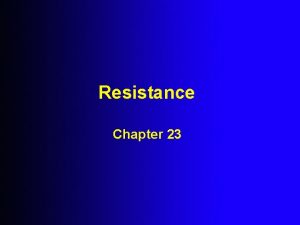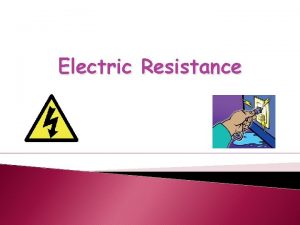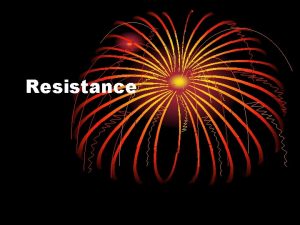The Civil War of Vietnam Resistance War Against























- Slides: 23

The Civil War of Vietnam Resistance War Against America By: Jaydlin

Basic Facts of the Vietnam War Started 1 st of November 1955 - 3 oth of April 1975 (19 yrs. long) Fought in South Vietnam, North Vietnam, Cambodia, and Laos Final Result: North Vietnamese Victory Who was majorly involved in the war: North and South Vietnam, United States, South Korea.

Teachable Terms from Canada’s Role Slide Vietnam War: Military conflict between South Vietnam, supported by the U. S. A, and Communist North Vietnam. The war resulted in a North Vietnamese victory and unification of Vietnam under Communist rule. Non-Belligerent: A person, a place, or an organization that does not fight in a given conflict. Boat People: South Vietnam refugees that fled to Canada by boat after the fall of South Vietnam. Draft Dodgers: An intentional decision not to comply with the military conscription of one’s nation and flee to another.

Canada’s Role in the Vietnam War Canada did barely anything Almost ruined their relationship with America by accepting Draft Dodgers Canada did not fight in the Vietnam war, and was officially non-belligerent. Canadian diplomats tried to tell the France & U. S to not fight because they believed that Vietnam was not strategically vital. Canadian industries exported military supplies and raw materials to America. After this trade Canadian unemployment fell to a record low of 3. 9% Cultural turning point for Canada because of Boat People.

Back Ground The North Vietnamese government and the Viet Cong were fighting to reunify Vietnam under communist rule. They viewed the conflict as a colonial war, fought initially against France and then America, and later against South Vietnam. Things would escalate to a civil war between North and South Vietnam.

Exit of the French In January 1950, the people's republic of China and the Soviet Union recognized the Viet Minh’s Democratic Republic of Vietnam as the legitimate republic of North Vietnam. PRC transforms the VM From a guerrilla force into a regular army. A month later the French-backed state of Vietnam in Saigon, led by former emperor Bao Dai, as the legitimate South Vietnamese government. U. S Created Military Assistance and Advisory Group to screen French requests for aid/ to train Vietnamese shoulders. U. S shouldered 80% of the cost of war. On May 7 th 1954, The French Union surrendered.

Viet Minh opposed the re-occupation of Vietnam by France and later opposed South Vietnam and the United States in the Vietnam War. Received crucial support from the Soviet Union and PRC (People’s Republic of China) Communists

Teachable Terms from Transition Slide Domino Theory- United States argued that if one country fell to communism, then all the surrounding countries would follow. Temporary Partition- North and South Vietnam were temporarily joined together. 17 th Parallel- the provisional military line between North and South Vietnam established by the Geneva Accords of 1954. The line did not exactly coincide with the 17 th parallel but ran south of it.

Transition Period Vietnam was temporarily partitioned at the 17 th parallel. Around 1 million northerners, mainly minority catholics, fled to S. V fearing persecution by communists. U. S tried to help by putting in $93 million relocation program to ferry refugees, but were stopped by the Viet Minh.

Ngo Dinh Diem Established the first Republic of Vietnam in South Vietnam. Devout Roman Catholic Majority of Vietnamese people were alarmed by actions such as Diem’s dedication of Vietnam to the Virgin Mary. Overthrown and executed with his brother in 1963.

Battle of Bin Gia Fought by South Vietnam and United States vs. Viet Cong won because they took full advantage of South Vietnam’s political instability over the ousting of President Ngo. lasted only four days Viet Cong only suffered light casualties, while America and S. Vietnam suffered heavy losses.

Battle of Dong Xoai Viet Cong vs. S. Vietnam and U. S Viet Cong wins once again when the Viet Cong ambushed and captured the U. S Special forces camp in Dong Xoai. U. S Tries to fight back but they were too confused and under prepared.

Westmore’s Three Point Plan After their second loss in a row, morale plummeted for the U. S and South Vietnam soldiers/nations. Desertion rates increased. Westmore’s Plan: Phase 1: Commitment of as much U. S force necessary to stop the losing streak and win. Phase 2: U. S and allied forces mount major offensive actions to destroy guerilla and organized enemy forces Phase 3: If we haven’t won yet, and extra year is to be taken to have another chance. This plan does not work at all.

Tet Vietnamese New Year, most important tradition/holiday in Vietnamese culture.

Tet Offensive (Jan. 31 st 1968) Largest battle of the war. Broke the truce that traditionally accompanied the Text, in hopes of a national uprising. 1, 000 Americans, 1, 400 civilians, 3, 200 Viet Cong died. Significant victory for the Viet Cong allied forces because it showed that the Viet Cong is a real force to be reckoned with.

Cambodia and Laos N. Vietnam invaded Cambodia in 1970, U. S and ARVN (South Vietnamese Army) forces invaded Cambodia to attack NVA and Viet Cong bases. Invasion sparked protest as new president Nixon had promised to stay out of Vietnam. Four students were killed by National Guards at Kent State University during a protest which provoked and started the public outrage at the U. S from all over North America.

Vietnamization Policy of Richard Nixon administration to end U. S involvement in the Vietnam War. Doesn’t work.

Causes Of Outrage My Lai Massacre- U. S Army platoon raped and killed civilians in 1968. 504 killed, many more injured. Green Beret Affair 1969 - Eight special forces soldiers were arrested for murder of a suspected double agent. 1971 Pentagon Paper leak- a leak of top secret history of U. S Involvement in Vietnam. Lies are brought to the forefront.

ARVN Failure 1979 Operation Lam Son 719, aimed at cutting the Ho Chi Minh trail in Laos. After meeting resistance, ARVN escaped in mass confusion, and tried to escape on U. S Helicopters. Half of ARVN troops involved were captured or killed. After this failure, the last remaining American Troops were withdrawn at the end of March 1973.

Paris Peace Accords Signed on 27 th Jan. 1973 Ceasefire declared across N. And S. Vietnam. North American war prisoners released. Proved to be the only one of the Paris Agreements which was fully carried out.

Teachable Terms for Aftermath slide Reeducation Camps- prison camps operated by the Communist government of Vietnam following the end of the Vietnam War. Most prisoners were inducted with no trials or former criminal charges. 165, 000 people died, 1 -2. 5 million people imprisoned. Killing Fields- locations of which anyone associated with South Vietnam were killed and buried in mass graves. Estimated 1. 5 million people killed.

After Math On 2 nd July 1976, South and North Vietnam merged to form the socialist Republic of Vietnam. 1 -2. 5 Million people sent to reeducation camps. Capital of Cambodia, Phnom Penh fell to communist Khmer Rouge. They would kill 1 -3 million Cambodians in the killing fields. Impact of KR contributed to a 1979 famine in Cambodian, which killed 300, 000 additional people. Over 3 million people left Vietnam, Laos, Cambodia in the refugee crisis. Most asian countries unwilling to accept the refugees. An estimated 1. 2 million refugees resettled in U. S Canada resettled over

Test Questions #1 - What were 2 causes of public outrage because of the Vietnam war? #2 - Why was the Tet Offensive significant? #3 - What would describe Canada’s role in the war? a) significant b) non-existent c) non-belligerent d) destructive
 Vietnam war
Vietnam war Presidential and congressional reconstruction venn diagram
Presidential and congressional reconstruction venn diagram Why was the civil war the first modern war
Why was the civil war the first modern war Toward civil war lesson 3 secession and war
Toward civil war lesson 3 secession and war Air resistance
Air resistance Specific cake resistance and filter medium resistance
Specific cake resistance and filter medium resistance Civil rights and civil liberties webquest
Civil rights and civil liberties webquest Vietnam war causes
Vietnam war causes Punji trap victim
Punji trap victim Vietnam war
Vietnam war Mai lai massacre definition
Mai lai massacre definition Stages of vietnam war
Stages of vietnam war Vietnam war apush
Vietnam war apush The domino theory vietnam war
The domino theory vietnam war Reason for vietnam war
Reason for vietnam war Napalm vietnam war
Napalm vietnam war Pro vietnam war slogans
Pro vietnam war slogans Did the vietnam war end in a stalemate
Did the vietnam war end in a stalemate Chapter 30 section 5 outline map the vietnam war
Chapter 30 section 5 outline map the vietnam war Analyze the ways in which the vietnam war heightened social
Analyze the ways in which the vietnam war heightened social President nixon endorsed vietnamization because
President nixon endorsed vietnamization because Us weapons vietnam war
Us weapons vietnam war Effects of the vietnam war
Effects of the vietnam war Vietnam war 1960
Vietnam war 1960







